Muddy water in the well - one, but very many-sided reason
To take a well dug in the summer cottage, which is a very sensitive "organism", reacts vividly to all the changes around. All his discontent is immediately reflected in the form of muddy water, and we begin to ask ourselves the question of why the water in the well has suddenly become muddy.
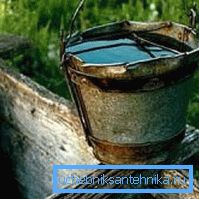
The reasons
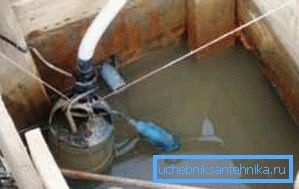
Here at least the situation of life:
- a well was dug and equipped a year or two ago;
- who worked perfectly and was always ready to offer you clean water and more than enough.
But you decided, forgetting caution:
- deepen the outdoor pool on the site, increasing in 2 times the volume of water that was intensively pumped out of the well, or
- decided to increase your pond, or,
- dramatically increased the area of their plantings, and hence the amount of water required for irrigation.
All of these actions can have a very negative impact on the state of groundwater, which leads to water turbidity..
To solve the problem in this situation will be quite difficult when the process is already running.
But first you need to lead a small analysis:
- drain and do not use the pool;
- stop experimenting with the pond;
- do not water additional beds yet, and minimize irrigation;
- wait some time;
- pump the old water out of the well and
- wait for clean water
- if it still appeared, then it’s a matter of your new undertaking, but the soils do not accept it and dump everything on the well.
One conclusion - to stop all their innovations and decide what is more important pool or well.
Another cause of clouding
Another very common reason is a violation or insufficient attention to the design of the soil adjacent to the well.
Ideally, the design should be as follows:
- A - clay castle, as an excellent means of protection from rain, thawed and drained water from entering the well intake area;
- B - clay, we notice the layer goes to the sides with a slight slope;
- C - coarse sand or a mixture of sand with small pebbles;
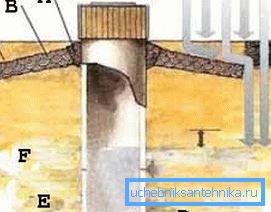
- D - gravel at the bottom of the well;
- E - aquifer;
- F - sand with coquina;
- G - rainwater, see how, ideally, the water should be drained away from the well with the help of an earthen castle and additional clearance around the perimeter of the well at a distance of 2-3 meters.
If the equipment of your well does not meet the above scheme, then wait at the bottom of outside water, and hence even in the new well muddy water.
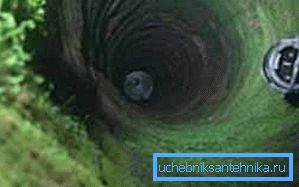
Systematization of causes
Above two very common reasons have already been given, where the new well and muddy water come from, and their solution.
It:
- intentional or unintentional interference with the state of groundwater and their supporting formations, and,
- drawbacks with well protection equipment.
Here are a few more reasons.
Mismanagement
All the following reasons are due to the mismanagement of the owner of the well:
- over time, the vertical rings of the well dispersed or the cement masonry of their joint connecting them collapsed;
- Consequently:
- depressurization construction structures and
- penetration of melt water and rain;
- The solution here is, of course, one thing:
- elimination of all breakages and distortions.
- the well is rarely used - a situation in our computer age that everyone is perfectly familiar with the practice of using inkjet printers - if you bought such a printer, then you need to print regularly so that the ink simply does not dry out;
- Consequently:
- it is the same for the printer and for the well - water / paint stagnates / dries and becomes cloudy / does not come out;
- solution to the problem:
- pumping all the water in the well, until it goes clean;
- and in the future, not to bring the situation to the handle and regularly take water from the well, maybe just pump it out for irrigation, even from a neighbor (this way you will kill not even two birds with one stone, but immediately with a dozen);

- you have a pump in the well, but it is located too low or it works too actively and powerfully, which in any case leads to agitation of silt from the bottom;
- Consequently:
- silt already in the raised water;
- solution to the problem:
- bring the position of the pump and its mode of operation in order - it should be at a distance of at least 70-80 cm from the bottom;
- sometimes you just need to change the pump to another, with a different type of suction.
- the well is not serviced and rapid flowering is already occurring on its inner sides;
- Consequently:
- still the same muddy water;
- solution to the problem:
- start the practice of permanent removal from the well of flown leaves, appeared vegetation on the sides, thorough cleaning of the bottom of the well with complete removal of water and replacement of gravel on the bottom.
Filtering is a separate conversation.
Separate conversation requires purification of water coming from the well.
The fact is that, no matter how much we want to have in our well “the purest Alpine source” or, even better, the source “Borjomi”, this tale will never happen. This means that the water will initially be slightly turbid and will require cleaning through filters.
In this case, the water must go through several stages of purification, and then it can even compete with the Alps.
These cleaning steps are:
- mechanical cleaning using strainers to remove all kinds of suspended impurities - silt, sand, rust, clay, flax fiber sealer;
- electrochemical oxidation with the help of electric electrodes - the pollutants are oxidized and the results of the operation precipitate onto the bottom of the well;
- catalytic clarification - removal of substances that cause clouding;
- fine cleaning with carbon filters - the water in the well becomes perfectly clean, it removes odors and unpleasant aftertastes.

Helpful advice! Filtering is, of course, very important, but it cannot be avoided from a more radical means - periodic disinfection of the entire well with chlorine. To do this, we advise you to completely remove the water from the well and thoroughly clean it of all extraneous migrations. The price of this work will affect the quality of the water, at least during the whole subsequent year of service of the well.
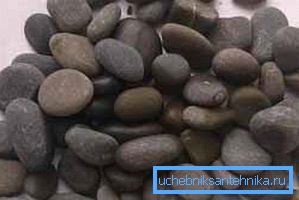
findings
If initially the water in the well was clean, then it is necessary to manage to achieve its turbidity. But, unfortunately, this happens all the time. And the reason is mostly one - inattention and negligence. Be sure to check out the additional video in this article.